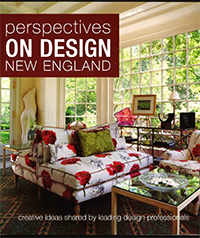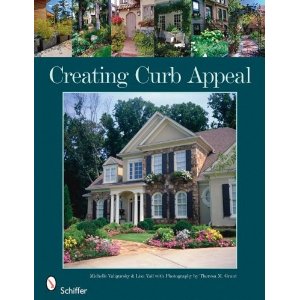LIGHTING-DESIGNER DESIGNATIONS: Telling One from the Other
Many professions and vocations are subject to state licensure, helping to ensure that the public can feel somewhat confident about dealing with licensees. Lighting designers are not licensed, but several certifications or similar designations are in use or under development. The National Lighting Bureau (NLB) has commissioned this article to provide an overview of what they are, with links for those who want more information. Do note that many licensed engineers (PEs), licensed architects (LAs or RAs), licensed landscape architects (LLAs or RLAs), and interior designers (licensed or otherwise) have lighting-design experience. As for certifications and similar accomplishments, however, a license is hardly a guarantee of a satisfactory outcome; in fact, nothing can be. The best one can do is to select a consultant with deliberate care; the NLB has information that can help.
CALCTP Certified Installer Contractor
The California Advanced Lighting Controls Training Program (CALCTP) is a statewide initiative aimed at increasing the use of lighting controls in commercial buildings. A collaborative effort sponsored principally by California electric utilities, CALCTP educates, trains, and certifies “licensed C-10 electrical contractors and state-certified general electricians in the proper programming, testing, installation, commissioning and maintenance of advanced lighting control systems.” To become a CALCTP-certified installer contractor, a firm must be proficient in advanced lighting controls and must employ: top-management personnel who have completed the CALCTP Business Development Training program; superintendents and supervisors who have completed the CALCTP Technical Installation program; and CALCTP-certified general electricians who have successfully completed the CALCTP Installation program.
CLC
Certified Lighting Consultant (CLC) is a designation conferred by the American Lighting Association (ALA), the association of the residential-lighting industry. Focused on residential-lighting issues, the certification is available only to those ALA members who have already earned Lighting Specialist (LS) status, discussed below. Those seeking the CLC must have ten years of lighting-industry experience, or must participate in 40 hours of Certification-Board-approved education courses, or must achieve an approved educational/experiential amalgam. They must also pass a final exam that requires candidates to complete a set of ALA-issued blueprints.
CLD
The Certified Lighting Designer (CLD) designation is a project of the International Association of Lighting Designers (IALD), an international organization that “strives to set the global standard for lighting-design excellence by promoting the advancement and recognition of professional lighting designers.” Still under development at the time of this writing (July 2015), the CLD is expected to:
• define the architectural-lighting-design profession by identifying core competencies and domains of practice,
• establish a validated method for assessing the competency of architectural-lighting designers,
• influence the standardization of educational curricula, and
• establish best practices in architectural-lighting design.
CLEP
The Association of Energy Engineers (AEE) created the Certified Lighting Efficiency Professional, or CLEP, designation to identify “individuals who have demonstrated high levels of experience, competence, proficiency, and ethical fitness, bringing to their professional activities the full scope of knowledge requisite to the development and implementation of effective lighting efficiency solutions within the commercial, industrial, institutional and governmental market sectors.” To become a CLEP, candidates must possess an approved combination of experience and education or licensure, must attend one of AEE’s preparatory CLEP training seminars, and must pass a four-hour written examination.
CLMC
The Certified Lighting Management Consultant (CLMC) designation is one of four awarded by the International Association of Lighting Management Companies (NALMCO), “an organization that establishes and promotes the highest professional standards for lighting-management professionals.” Those who earn the CLMC designation must: possess at least five years’ experience as a lighting-management professional, “in a position that directly affects the operation, modification, maintenance, or design of a lighting system”; pass a rigorous computer-based examination; and conform to NALMCO’s ethical standards.
CSLC
NALMCO also awards the Certified Sustainable Lighting Consultant (CSLC) designation, but only to those CLMCs who are “familiar with the concepts surrounding sustainability and how they relate to lighting systems at all phases of implementation.” Earning the CSLC requires individuals to pass a comprehensive computer-based test.
HBDP
The High-Performance Building Design Professional (HBDP) certification was established by the American Society of Heating, Refrigerating, and Air-Conditioning Engineers (ASHRAE) to “assess an individual’s understanding of how the management of HVAC&R operations helps to achieve and maintain building-performance goals.” Candidates must possess a certain amount of education and/or experience to sit for the examination, and must respond to 115 questions. Lighting is not the focus of the examination. The integration of electric lighting and daylighting and the visual quality of a lighted space are the principal light-based exam elements.
LC
The LC or Lighting Certified designation is granted by the National Council on Qualifications for the Lighting Professions (NCQLP), a not-for-profit educational organization founded in 1991 to promote “effective and efficient lighting practice.” To earn an LC, candidates must take a four-hour, 180-question examination whose successful completion demonstrates a “working knowledge of lighting design and application.” To sit for the exam, candidates must hold a bachelor’s degree from an accredited college/university and have three years of lighting-related experience, or have six years of lighting-related experience. The U.S. General Services Administration (GSA) requires that lighting-system design for the buildings it manages be performed or supervised by an LC.
LS
is an To earn the American Lighting Association’s (ALA’s) Lighting Specialist (LS) designation, an ALA member must become familiar with the 45-unit, 845-page Residential Lighting Training Manual, then pass a final exam.





